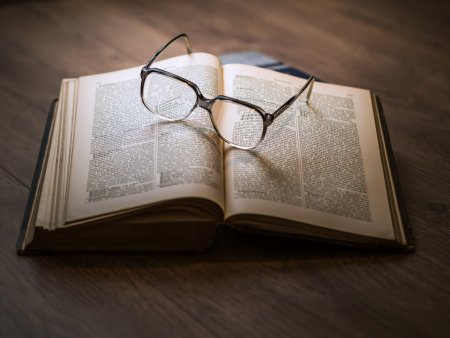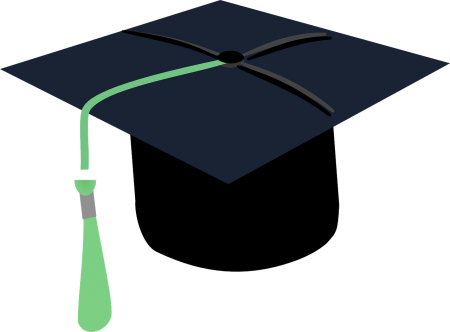1 ответ
Киликовский Кирилл
Biography
Born on 17 July (5 July, old style), 1846, the village of Language-Christmas, Borovichi uyezd, Novgorod province died April 14, (April 2 old style), 1888, St. Petersburg) Russian ethnographer, anthropologist, biologist and Explorer, who studied the indigenous population of South-East Asia, Australia and Oceania (1870-1880-ies), including the Papuans of the northeast coast of New Guinea (the Bank in Russian literature called Shore Maclay). Birthday Maclay is a professional holiday today.
Early years
Nikolai Nikolaevich Miklukho-Maklai was born in a family of a railway engineer. The family had hereditary nobility, which has earned great-grandfather Maclay a native of Chernigov Zaporozhian Cossack Stepan Miklukha who have distinguished themselves in the capture of Ochakov (1788).
Later the family moved to St. Petersburg, where in 1858 Nicholas continued her studies in the Second St. Petersburg gymnasium. After graduating from the gymnasium course of study, Maclay as a volunteer continues his studies on the physico-mathematical faculty of St. Petersburg University. The study was not long. In 1864, for participating in student gatherings Maclay expelled from the University and he to the funds raised by the student fraternity, went to Germany. In Germany he continued his studies at the University of Heidelberg, where he studied philosophy. A year Maclay transferred to the medical faculty of the Leipzig University, and then University of Jena. At the University of Jena Nicholas met the famous zoologist E. Haeckel, under whom began to study comparative anatomy of animals. As assistant Professor Haeckel Maclay makes the journey to the Canary Islands and in Morocco. After graduation in 1868 Maclay makes independent travel.
the oberezh the red sea, and then, in 1869, returned to Russia.
Becoming a scientist
The horizons of the young researcher widened and he moved on to more General questions of natural science anthropology, Ethnography, and geography. In these areas, Miklukho-Maklay managed to achieve some success. Particularly interesting is his conclusion that cultural and racial characteristics of various peoples caused by natural and social environment.
Does Maclay, and the next major journey. In 1870 year on the military ship "Vityaz", he is sent to New Guinea. Here, on the northeastern shore of the island, he spends two years studying the life, customs, religious rites of the natives (Papuans). Started in New Guinea observations Maclay continues in the Philippines, in Indonesia, on the southwest coast of New Guinea, the Malay Peninsula and the Islands of Oceania.
In 1876-1877 the scientist again spends a few months on the northeastern shore of New Guinea, returning to the tribe, whose life he had observed earlier. Unfortunately, his stay on the island was short-lived, and the symptoms of anemia and General exhaustion forced him to leave the island and depart to Singapore. The treatment took more than six months. The lack of financial resources has not allowed Miklukho-Maclay to return to Russia, and he
was forced to move to Sydney (Australia), where he settled at the Russian Consul. Then Maclay lived in the English club, and then moved to a house of a public figure, zoologist and President of the Linnaean society of New South Wales W. Macleay. Mclay helps Miklukho-Maclay made to implement them on Linescom society the idea of building Australian Zoological station. In September 1878 a proposal Maclay was approved and Bay Watson Bay project Sydney architect John Kirkpatrick started the construction of the station, which was called the Marine biological station.
In 1879-1880 years Maclay makes an expedition to the Islands of Melanesia, in particular on the island of New Caledonia, and once again visited the North-Eastern coast of New Guinea.
In 1882, the scientist returned to Russia. The plans Maclay included construction of a marine station and a Russian settlement in the North-East coast of New Guinea (Maclay Coast). Maclay proposed and its economic and social transformation of the lives of the islanders. An audience with Alexander III did not bring results. The plans of the scientist was rejected, but he managed to solve the issues of debt repayment and to obtain funding for further studies
tion and publication of their own works.
In 1883 Maclay left Russia and returned to Australia. In 1884 he married Margaret Robertson, daughter of a large landowner and political leader of New South Wales. In 1886 year, the scientist returns to Russia again offers to the Emperor "project of the Maclay Coast" as the opposition to the colonization of the island by Germany. However, this attempt did not bring the desired result. Worn the body of the researcher weakly resisted the disease, and in the evening of 2 April 1888 the great Russian scientist, died in the hospital the Viliy in Saint-Petersburg.
Born on 17 July (5 July, old style), 1846, the village of Language-Christmas, Borovichi uyezd, Novgorod province died April 14, (April 2 old style), 1888, St. Petersburg) Russian ethnographer, anthropologist, biologist and Explorer, who studied the indigenous population of South-East Asia, Australia and Oceania (1870-1880-ies), including the Papuans of the northeast coast of New Guinea (the Bank in Russian literature called Shore Maclay). Birthday Maclay is a professional holiday today.
Early years
Nikolai Nikolaevich Miklukho-Maklai was born in a family of a railway engineer. The family had hereditary nobility, which has earned great-grandfather Maclay a native of Chernigov Zaporozhian Cossack Stepan Miklukha who have distinguished themselves in the capture of Ochakov (1788).
Later the family moved to St. Petersburg, where in 1858 Nicholas continued her studies in the Second St. Petersburg gymnasium. After graduating from the gymnasium course of study, Maclay as a volunteer continues his studies on the physico-mathematical faculty of St. Petersburg University. The study was not long. In 1864, for participating in student gatherings Maclay expelled from the University and he to the funds raised by the student fraternity, went to Germany. In Germany he continued his studies at the University of Heidelberg, where he studied philosophy. A year Maclay transferred to the medical faculty of the Leipzig University, and then University of Jena. At the University of Jena Nicholas met the famous zoologist E. Haeckel, under whom began to study comparative anatomy of animals. As assistant Professor Haeckel Maclay makes the journey to the Canary Islands and in Morocco. After graduation in 1868 Maclay makes independent travel.
the oberezh the red sea, and then, in 1869, returned to Russia.
Becoming a scientist
The horizons of the young researcher widened and he moved on to more General questions of natural science anthropology, Ethnography, and geography. In these areas, Miklukho-Maklay managed to achieve some success. Particularly interesting is his conclusion that cultural and racial characteristics of various peoples caused by natural and social environment.
Does Maclay, and the next major journey. In 1870 year on the military ship "Vityaz", he is sent to New Guinea. Here, on the northeastern shore of the island, he spends two years studying the life, customs, religious rites of the natives (Papuans). Started in New Guinea observations Maclay continues in the Philippines, in Indonesia, on the southwest coast of New Guinea, the Malay Peninsula and the Islands of Oceania.
In 1876-1877 the scientist again spends a few months on the northeastern shore of New Guinea, returning to the tribe, whose life he had observed earlier. Unfortunately, his stay on the island was short-lived, and the symptoms of anemia and General exhaustion forced him to leave the island and depart to Singapore. The treatment took more than six months. The lack of financial resources has not allowed Miklukho-Maclay to return to Russia, and he
was forced to move to Sydney (Australia), where he settled at the Russian Consul. Then Maclay lived in the English club, and then moved to a house of a public figure, zoologist and President of the Linnaean society of New South Wales W. Macleay. Mclay helps Miklukho-Maclay made to implement them on Linescom society the idea of building Australian Zoological station. In September 1878 a proposal Maclay was approved and Bay Watson Bay project Sydney architect John Kirkpatrick started the construction of the station, which was called the Marine biological station.
In 1879-1880 years Maclay makes an expedition to the Islands of Melanesia, in particular on the island of New Caledonia, and once again visited the North-Eastern coast of New Guinea.
In 1882, the scientist returned to Russia. The plans Maclay included construction of a marine station and a Russian settlement in the North-East coast of New Guinea (Maclay Coast). Maclay proposed and its economic and social transformation of the lives of the islanders. An audience with Alexander III did not bring results. The plans of the scientist was rejected, but he managed to solve the issues of debt repayment and to obtain funding for further studies
tion and publication of their own works.
In 1883 Maclay left Russia and returned to Australia. In 1884 he married Margaret Robertson, daughter of a large landowner and political leader of New South Wales. In 1886 year, the scientist returns to Russia again offers to the Emperor "project of the Maclay Coast" as the opposition to the colonization of the island by Germany. However, this attempt did not bring the desired result. Worn the body of the researcher weakly resisted the disease, and in the evening of 2 April 1888 the great Russian scientist, died in the hospital the Viliy in Saint-Petersburg.
, оставишь ответ?
Похожие вопросы
-
Вопросы ответы
Новое
NEW
Статьи
Информатика
Статьи
Последние вопросы
Газообразный аммиак объёмом 2.24 л (н.у.) был полностью поглощён 14.68 мл
Химия.
Упражнение 2 Выпишите глаголы и вставьте пропущенные буквы
Русский язык.
Радиус окружности, описанной около равностороннего треугольника, равен 6. Найдите сторону треугольника
Геометрия.
Вычислите силу с которой при давлении 100 КПа атмосфера давит на
Физика.
Синтаксический разбор и схема Но мы сказали, что нам ничего не
Русский язык.
Массовая доля целлюлозы в древесине составляет 50%. Какая масса спирта может
Химия.
помоги мне пожалуста прш
869*(61124-488*125)-50974
Математика.
по шкале высот определить ,в каком направлении происходит понижение релефа уральских гор
География.
Помогите пожалуйста написать Сочинение Овчинникова "победитель'
Литература.
Здравствуйте. Нужен цитатный план испытания лётчика в лесу главы2-13 по повести
Разные вопросы.
Облако тегов




